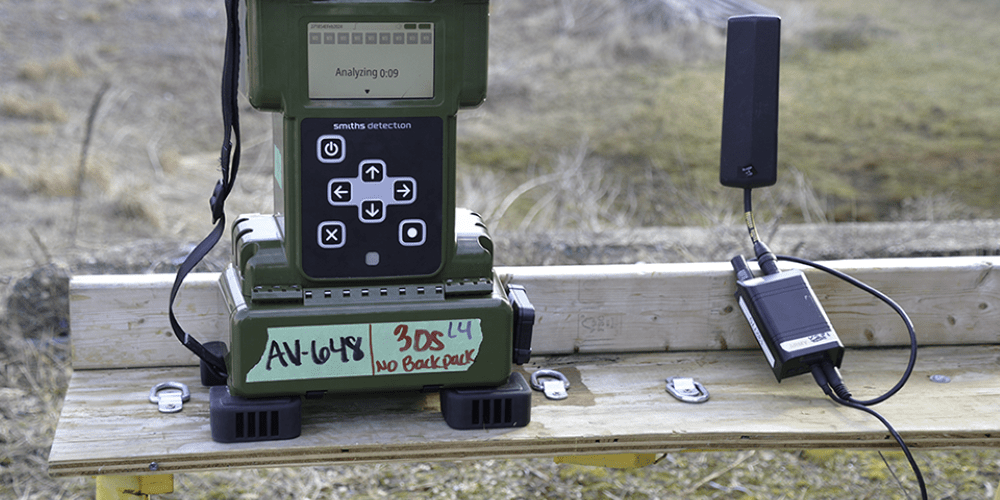Quickly detecting the presence of chemical agents is critical to joint force survivability. Knowing that danger is near allows commanders to make decisions that keep warfighters safe and/or gain useful information. The Aerosol Vapor Chemical Agent Detector (AVCAD), led by the Joint Program Executive Office for Chemical, Biological, Radiological and Nuclear Defense (JPEO-CBRND) in partnership with Smiths Detection, is a next-generation chemical detector that will alert Warfighters of the presence of a chemical agent.
The AVCAD is designed to detect, identify, alarm, and report threat vapors and aerosols. AVCAD gives the joint force increased capability to defend against chemical agent exposure as it is able to detect both traditional and nontraditional agents. It is a mass spectrometer-based system that works by pulling in air for vapor and aerosol sample preconcentration and heating until it is analyzed for detection and identification results, which are then displayed to the operator.
AVCAD is the first autonomous monitoring capability for aerosol chemical detection across the services – U.S. Army, Navy, Marine Corps, National Guard Bureau, and Coast Guard. It also provides wireless connectivity employing integrated sensor architecture communication protocols. The autonomous nature allows it to be integrated with other equipment and is sensitive enough to detect low hazard levels and analyze liquid and solid aerosols and vapors of both traditional and non-traditional types of chemical warfare agents.
“AVCAD comes with a lot of complexities that make this an equipment improvement for our warfighters. It can detect low levels of liquid, solid, and aerosol chemical warfare agents. It’s highly sensitive and provides a remote alarm warning and reporting capability,” said LTC Brent Wilson, Joint Product Manager for Chemical Detection and Mobile Analytics.


